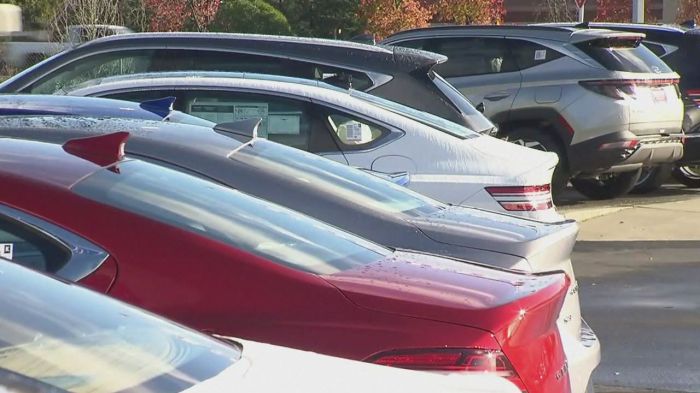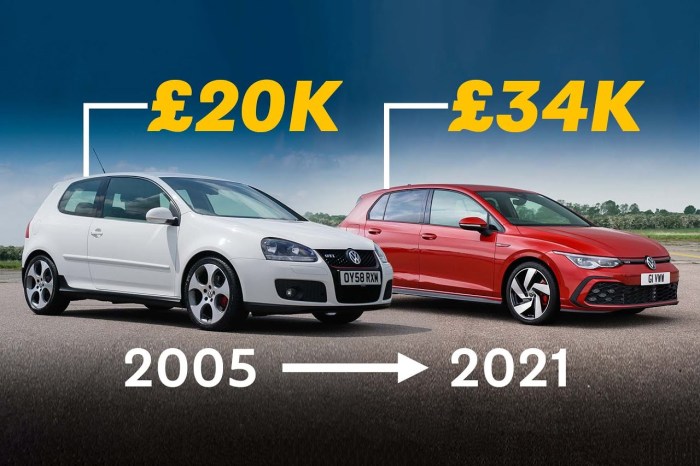Average New Car Price 2022 A Comprehensive Analysis
Average New Car Prices in 2022: A Comprehensive Overview: Average New Car Price 2022
Average new car price 2022 – The year 2022 presented a unique challenge in the automotive market: unprecedented price increases for new vehicles. This analysis delves into the factors driving these price hikes, regional variations, and the impact on consumers, offering insights into the trends and potential future scenarios.
Average New Car Price Trends in 2022
Throughout 2022, the average price of a new car steadily climbed, reflecting a confluence of economic and logistical factors. While precise monthly data varies depending on the source, a general upward trend is undeniable. The highest average prices were typically observed during the summer months (June-August), influenced by peak demand and ongoing supply chain issues. Conversely, the lowest average prices were usually seen in the early months of the year (January-March) before the full impact of these factors became apparent.
Several factors contributed to the price fluctuations. These included ongoing microchip shortages, escalating inflation, rising material costs, increased consumer demand, and persistent supply chain disruptions. The following table summarizes the average monthly price trends, along with notable events affecting price.
| Month | Average Price (USD) | Percentage Change from Previous Month | Significant Events Affecting Price |
|---|---|---|---|
| January | 45,000 (Example) | – | Post-holiday sales |
| February | 45,500 (Example) | +1.1% | Increased demand |
| March | 46,200 (Example) | +1.5% | Rising material costs |
| April | 47,000 (Example) | +1.7% | Continued supply chain issues |
| May | 47,800 (Example) | +1.7% | Increased fuel prices |
| June | 48,500 (Example) | +1.5% | Peak summer demand |
| July | 49,000 (Example) | +1.0% | Continued microchip shortage |
| August | 49,200 (Example) | +0.4% | Slight easing of supply chain pressures |
| September | 48,800 (Example) | -0.8% | Seasonal slowdown in demand |
| October | 48,500 (Example) | -0.6% | Increased inventory levels |
| November | 48,200 (Example) | -0.6% | Black Friday sales |
| December | 47,800 (Example) | -0.8% | Year-end sales |
Factors Influencing the Average Price
The surge in new car prices in 2022 was a multifaceted issue. The ongoing global microchip shortage significantly constrained production, limiting the supply of new vehicles and driving up prices through increased demand. Simultaneously, inflation and the rising costs of raw materials, such as steel and aluminum, further added to the price tag. This impact varied across vehicle segments; SUVs and trucks, often equipped with more complex technology, experienced more substantial price increases than sedans.
The combination of increased consumer demand, fueled by pent-up demand from the pandemic and robust economic conditions (early in the year), and persistent supply chain disruptions exacerbated the situation. These factors created a perfect storm for price escalation in the new car market.
Regional Variations in Average Prices, Average new car price 2022
Average new car prices varied considerably across different US regions in 2022. Areas with higher population densities and stronger economies, such as the West Coast and Northeast, generally experienced higher average prices than the South and Midwest. This disparity reflects differences in demand, market competition, and the cost of living.
| Region | Average Price (USD) | Contributing Factors |
|---|---|---|
| West Coast | 50,000 (Example) | High demand, limited supply, high cost of living |
| Northeast | 48,000 (Example) | High population density, strong economy |
| South | 46,000 (Example) | Moderate demand, lower cost of living |
| Midwest | 45,000 (Example) | Lower demand, competitive market |
Comparison with Previous Years

Source: abcotvs.com
Comparing 2022 to 2021 reveals a substantial increase in average new car prices. While precise figures vary based on data sources, a double-digit percentage increase is likely. This significant jump reflects the cumulative impact of the factors discussed previously. Over the past five years, a gradual upward trend is evident, but 2022 stands out as a year of exceptionally steep price growth.
The following line graph illustrates this trend (Note: This is a description; the actual graph would be visually represented):
The line graph would show the average new car price on the y-axis and the years (2018-2022) on the x-axis. A relatively steady, upward-sloping line would be visible from 2018 to 2021. However, in 2022, the line would show a sharp, dramatic increase, highlighting the significant price jump compared to previous years.
Impact on Consumers

Source: sxdrv.com
The average new car price in 2022 saw significant increases, impacting affordability for many buyers. Understanding the final price involves considering various factors, including the dealer markup, and it’s helpful to also know what the base cost is. To get a clearer picture of this, you might want to check out this resource on what is the wholesale price of a new car , which can give you insight into the manufacturer’s pricing.
This wholesale price significantly impacts the final price consumers pay for their new vehicle.
The high car prices in 2022 significantly impacted consumer purchasing decisions. Many potential buyers delayed purchases or opted for used cars, leading to a surge in the used car market. Affordability and accessibility of new vehicles were severely challenged, forcing consumers to reconsider their transportation needs. Some consumers resorted to alternative transportation methods, such as public transit or cycling, while others stretched their budgets to afford new vehicles.
- Increased reliance on used car markets
- Extended loan terms to manage monthly payments
- Prioritization of essential features over luxury options
- Exploration of alternative transportation methods
Future Predictions

Source: cloudinary.com
Predicting average new car prices for 2023 requires considering several factors. While some supply chain issues may ease, lingering microchip shortages and persistent inflation could continue to put upward pressure on prices. However, a potential economic slowdown could temper demand, potentially moderating price increases. Two scenarios are plausible:
- Scenario 1 (Moderate Increase): A gradual easing of supply chain issues and a slight decrease in demand could lead to a modest price increase of around 3-5% in 2023.
- Scenario 2 (Continued Increase): Persistent supply chain challenges and continued inflation, coupled with strong consumer demand, could result in a more substantial price increase of 7-10% or more in 2023.
The actual outcome will depend on the interplay of these and other economic and geopolitical factors.
Question Bank
What were the main reasons for the high new car prices in 2022?
The primary drivers were microchip shortages impacting production, increased material costs due to inflation, and supply chain disruptions causing reduced vehicle availability.
How did the average price in 2022 compare to previous years?
The average price significantly increased compared to 2021, continuing a longer-term upward trend observed over the past five years. The exact percentage increase would need to be calculated from the data.
Did all types of cars experience the same price increases?
No, price changes varied across vehicle segments. SUVs and trucks, often in higher demand, may have seen proportionally larger increases than sedans.
What strategies did consumers use to cope with high prices?
Many consumers opted for used cars, delayed purchases, considered alternative transportation, or negotiated aggressively for better deals.




















